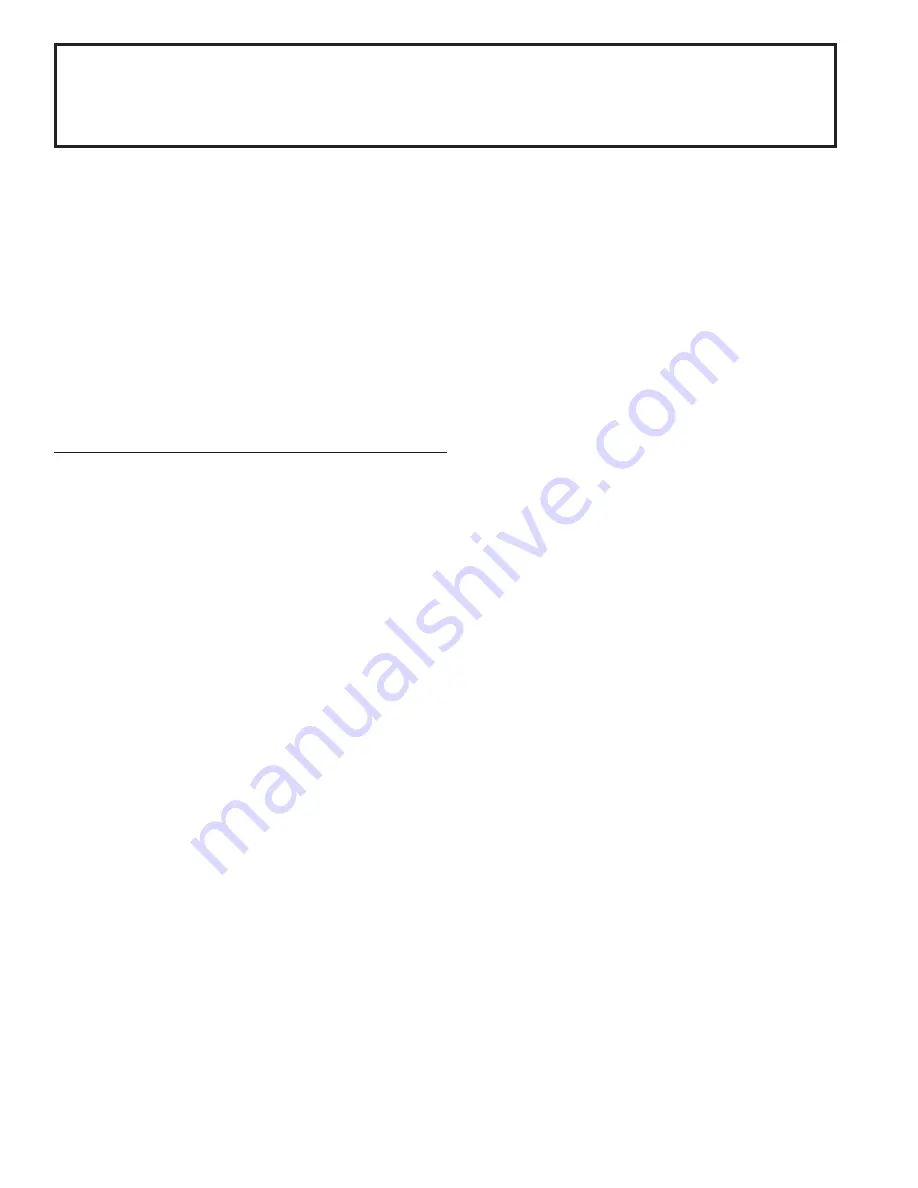
Page 8 of 32
P/N 89332-01 Rev F 7/11
WARNING
THE INFORMATION BELOW IS MEANT TO SUPPLEMENT, NOT REPLACE, THE INSTRUCTIONS, TRAIN-
ING, SUPERVISION, MAINTENANCE, AND OTHER ELEMENTS OF YOUR ORGANIZED RESPIRATORY
PROTECTION PROGRAM. SEE WARNING ON PAGE 1 OF THIS DOCUMENT. FAILURE TO HEED ANY
WARNINGS IN THIS INSTRUCTION MAY RESULT IN SERIOUS INJURY OR DEATH.
WARNING
FOLLOW THE REGULAR OPERATIONAL
INSPECTION PROCEDURE EXACTLY. IF
THE END OF SERVICE INDICATOR ALARM
DOES NOT ACTUATE AS DESCRIBED
I N T H I S I N S T R U C T I O N , T H E P U R G E
DOES NOT ACTUATE AS DESCRIBED
IN THIS INSTRUCTION OR ANY OTHER
OPERATIONAL MALFUNCTION IS NOTED,
DO NOT USE THE RESPIRATOR. REMOVE
THE RESPIRATOR FROM SERVICE AND
TAG IT FOR REPAIR BY AUTHORIZED
PERSONNEL. FAILURE TO PROPERLY
IDENTIFY MALFUNCTIONS MAY RESULT
IN SERIOUS INJURY OR DEATH.
WARNING
DAMAGED CYLINDERS MAY SUDDENLY
LEAK OR RUPTURE IF LEFT CHARGED WITH
COMPRESSED AIR. FAILURE TO INSPECT
FOR DAMAGE AND TO EMPTY THE AIR
FROM DAMAGED CYLINDERS MAY RESULT
IN SERIOUS INJURY OR DEATH.
WARNING
T H E S M A L L V E N T H O L E S I N T H E
PRESSURE REDUCER MUST BE CLEAR
A N D U N O B S T R U C T E D F O R P R O P E R
O P E R AT I O N O F T H E R E S P I R AT O R .
OBSTRUCTION OF THE VENT HOLES EITHER
BY DIRT ACCUMULATION OR CARELESS
APPLICATION OF USER LABELING MAY
RESULT IN A MALFUNCTION OF THE
RESPIRATOR WHICH COULD LEAD TO
SERIOUS INJURY OR DEATH.
INSPECTION OF THE BREATHING AIR CYLINDER
1. Visually inspect breathing air cylinder and valve assembly for
physical damage such as dents or gouges in metal or in composite
wrapping. Cylinders which show physical damage or exposure to
high heat or flame, such as paint turned brown or black, decals
charred or missing, pressure gauge lens melted or elastomeric
bumper distorted, and cylinders which show evidence of exposure
to chemicals such as discoloration, cracks in the cylinder or the
composite wrapping, peeling of the outer layers of the composite
wrapping and/or bulging of the cylinder wall, shall be removed
from service and emptied of compressed air. Publications on
compressed gas cylinder inspection procedures are available from
Compressed Gas Association Inc., 1725 Jefferson Davis Hwy.,
Suite 1004, Arlington, VA 22202 (703-412-0900).
2. Check the latest cylinder hydrostatic test date to ensure it is cur-
rent. The date of manufacture marked on the cylinder is also the
date of the first hydrostatic test. All breathing air cylinders used
with SCOTT AIR-PAK SCBA’s must be visually inspected regularly
and hydrostatically tested at the required intervals by a licensed
cylinder retester. Intervals for hydrostatic testing are established in
the appropriate US Department of Transportation (DOT) specifica-
tion or applicable DOT exemption, or in the appropriate Transport
Canada (TC) Permit of Equivalent Level of Safety. Refer to the
current revision of
Safety Precautions for AIR-PAK Cylinders
,
SCOTT P/N 89080-01, available on request from SCOTT Safety.
Composite fiber overwrapped cylinders must be tested up to
their maximum life which, at the time of the publication of this
instruction, is 15 years from the date of manufacture. It is the
responsibility of your organized respiratory protection program to
arrange for visual inspection and hydrostatic testing of cylinders
by a licensed retester.
3. Check for damage of the cylinder valve hand wheel and the
threads on the cylinder valve outlet.
4. Check the relief valve (burst disc) for damage or dirt.
5. Check the cylinder pressure gauge for “FULL” indication. If cyl-
inder pressure is less than “FULL,” replace with a fully charged
cylinder.
Proceed to
INSPECTION OF THE RESPIRATOR
REGULAR OPERATIONAL INSPECTION
The following procedure shall be used when you first receive the
respirator and for regular inspection of the respirator.
Respirators main-
tained for emergency use must be inspected as frequently as required
to assure the respirator will function properly when required. The US
Labor Department (OSHA), pursuant to 29 CFR 1910.134, requires at
least monthly inspection of respirators maintained for emergency use.
NIOSH recommends an inspection for cylinder pressure at least weekly.
All respirators shall be inspected after each use. If any damage or
malfunction is noted, remove the respirator from service and tag for
repair by authorized personnel.
IF ANY DISCREPANCY OR MALFUNCTION IS NOTED DURING
THE INSPECTION, DO NOT USE THE RESPIRATOR. REMOVE
THE RESPIRATOR FROM SERVICE AND TAG IT FOR REPAIR
BY AUTHORIZED PERSONNEL.







































